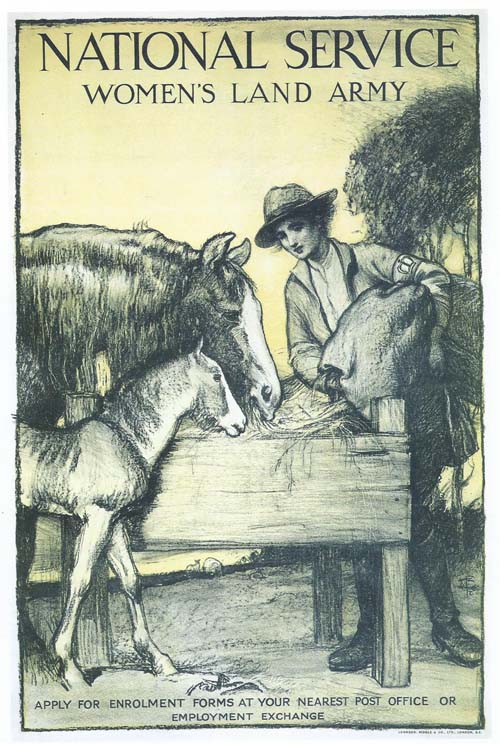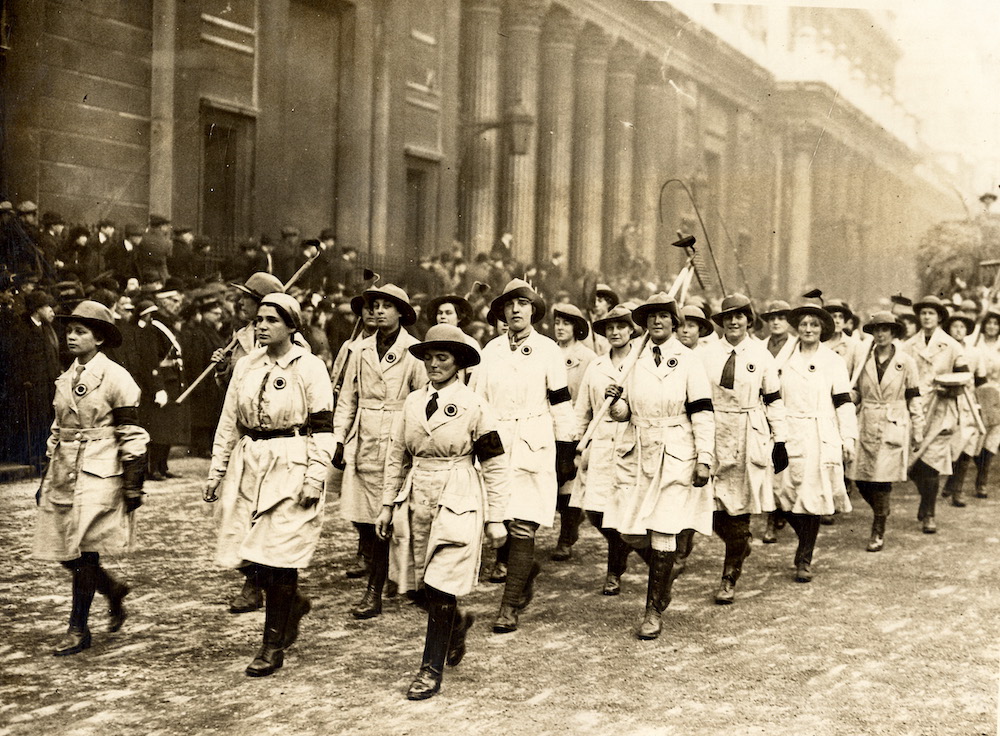
Source: Imperial War Museum
During World War One, 23,000 women were recruited to work full-time on the land in the Women’s Land Army. They helped to replace male farmers and farmworkers who had gone to fight in the war.
This form of national service for young female farm workers was called the Women’s Land Army, despite being a civilian organisation. Their main aim was to increase food production during the war.
There were three sections to the Women’s Land Army:-
Agriculture: In autumn 1918, this section employed 12,649 Women’s Land Army members. The majority worked as milkers and field workers.
Forage (haymaking for food for horses): The Forage Corps started in 1915, before becoming a section of the Women’s Land Army, working in Great Britain and Ireland. 8,000 women worked in Forage by the end of 1919,
Timber Cutting: The Women’s Forestry Corps was set up in 1916 and employed gangs of women to carry out forestry work to increase timber production. These women later becoming part of the WLA. By January 1918, 400 women worked as foresters in the Women’s Land Army.
The majority of women worked in agriculture and were milkers and field workers. Some women were carters, ploughwomen (working with horses), and market gardeners.
Please use the navigation bar on the left hand side to find out more about the different parts of the First World War Women’s Land Army.
